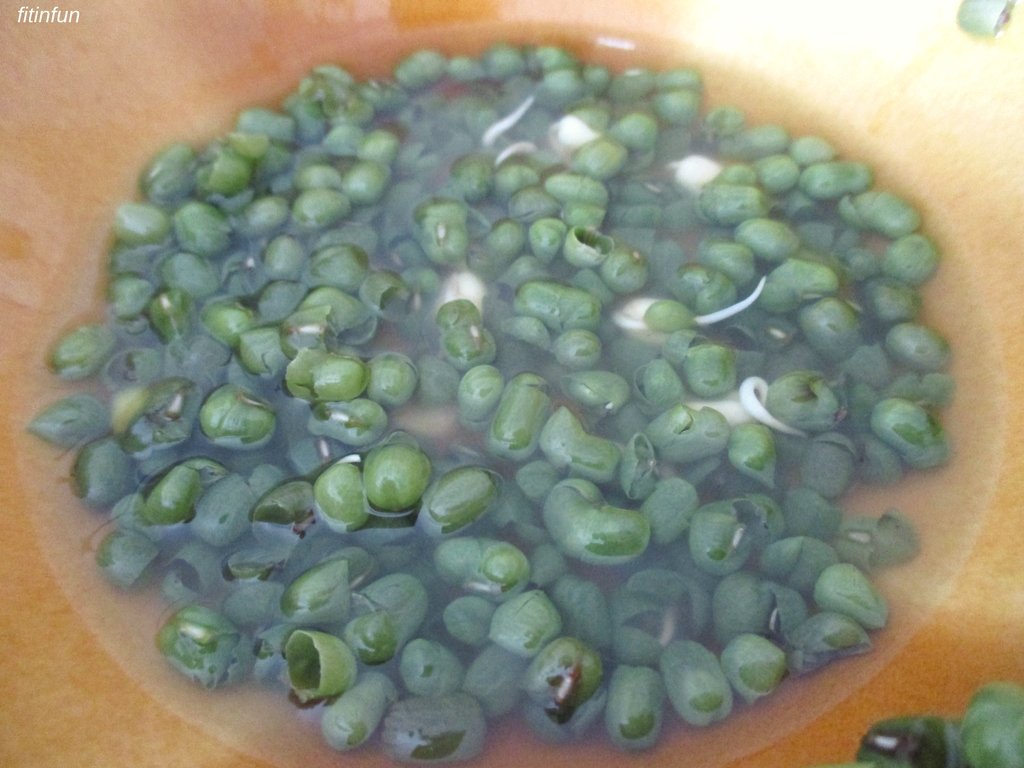An optional step while sprouting mung beans or any bean or seed is to take the hulls out of the mix. This can be done at any time after the little roots and exploding pods have shucked them off.
Here you see my mung beans right after the last photo I showed you – at about 48 hours of time. Actually you can’t see much of the sprouts now. Instead you see the hulls floating in some water I added after temporarily moving the sprouts to a different and deeper bowl than the one I have been sprouting them in.

At this point I can use my fingers and scrape the hulls off easily. The hulls float and the sprouts stay down lower. After this is done, I transfer the sprouts back to the original shallow bowl and put them back into the closest, cover loosely with an ever available Bangkok plastic bag, and leave them to keep growing.
I put the water in the fridge and use it later for soup or to soak any grains I'm going to eat. I lug my drinking water up here and I am not wasting any of it if I can help it.
Depending on what you are reading, this hull removing step is recommended:
Early in the sprout growth time – as soon as the hulls separate.
This is to stave off botulism and bacterial diseases that might kill you. Those who want you to remove the hulls say it is better for future growth and more sanitary. The hulls are doing nothing after they separate anyway and you do not eat them later. This is a picky time of effort and wet fingers if you want to get all the hulls.
After the sprouts are fully grown.
It is very easy to separate the hulls after growing is done, as 99% of them will be separated from their sprouts. Those who do this step when you are done growing and about to eat or store the sprouts, include it in a final rinse of the sprouting part that you will eat.
Not at all
Those who do not do this step at all say it is not necessary because the hulls will mostly drop to the bottom anyway by the time the growing is done. They think the other two groups of people are crazy to waste their time.
I have consistently been adding water and floating off the hulls in the third day of all my sprouting for many years now. In the interest of science, and because I was reading about the topic for these posts, I threw caution to the wind and did not do the step at all in my next batch of mung bean sprouts after this.
Guess what! For the most part, the hulls did sink to the bottom of the bowl. The sprouts themselves did not seem to suffer. They grew and tasted the same and I did not waste time chasing hulls.
The thrills never end when you are sprouting!
More in this series
Mung Beans to Sprout
Sprouting Mung Beans First Soak
Sprouting Mung Beans After 24 Hours
Sprouting Mung Beans After 48 Hours
= =
My post is for today's foodphotography @photocontest by @juliank. You have 14 ways to enter each week, so give it a try! I’m using a Canon ELPH160 point and shoot camera for these photos.

